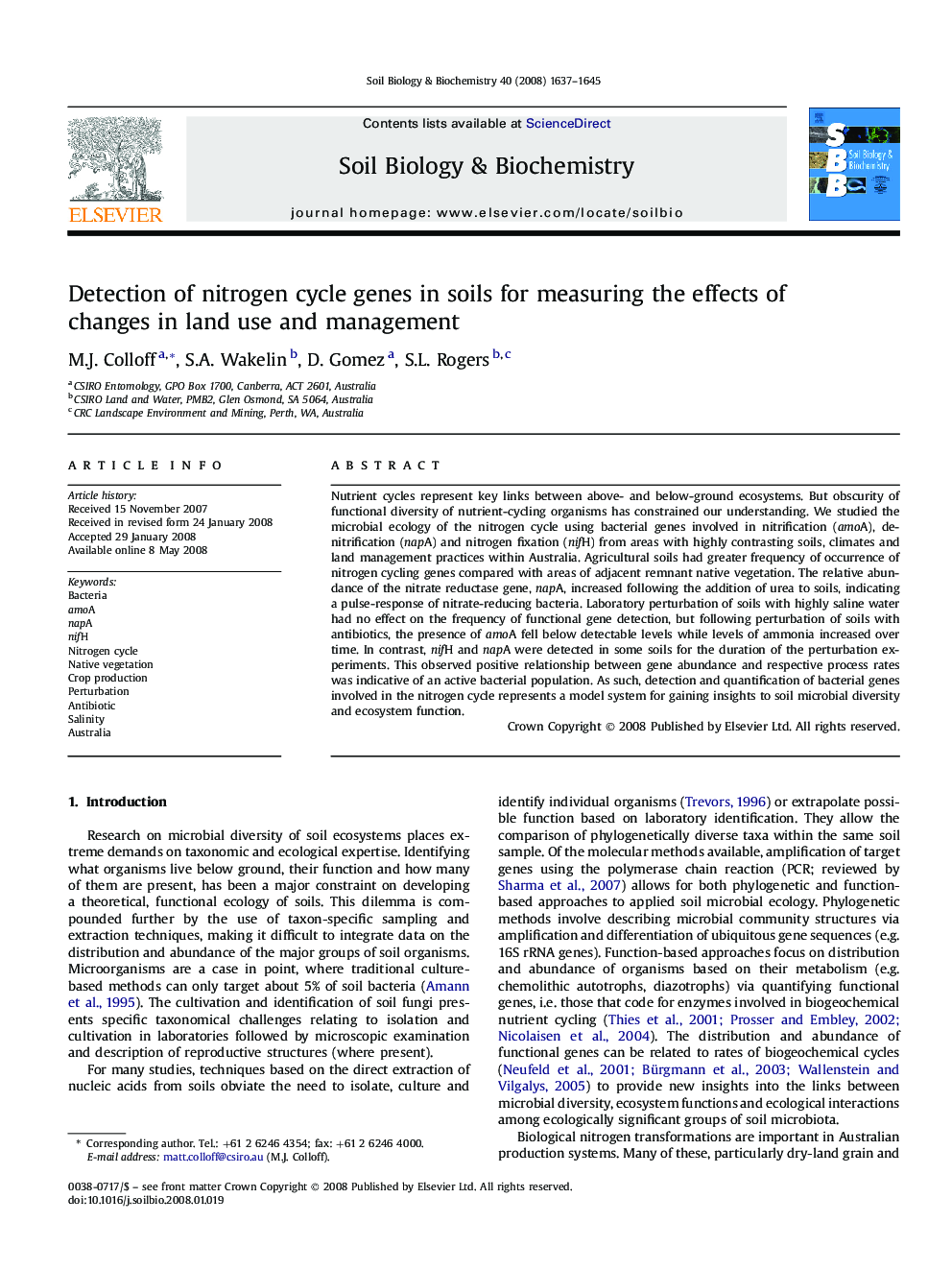| Article ID | Journal | Published Year | Pages | File Type |
|---|---|---|---|---|
| 2025815 | Soil Biology and Biochemistry | 2008 | 9 Pages |
Nutrient cycles represent key links between above- and below-ground ecosystems. But obscurity of functional diversity of nutrient-cycling organisms has constrained our understanding. We studied the microbial ecology of the nitrogen cycle using bacterial genes involved in nitrification (amoA), denitrification (napA) and nitrogen fixation (nifH) from areas with highly contrasting soils, climates and land management practices within Australia. Agricultural soils had greater frequency of occurrence of nitrogen cycling genes compared with areas of adjacent remnant native vegetation. The relative abundance of the nitrate reductase gene, napA, increased following the addition of urea to soils, indicating a pulse-response of nitrate-reducing bacteria. Laboratory perturbation of soils with highly saline water had no effect on the frequency of functional gene detection, but following perturbation of soils with antibiotics, the presence of amoA fell below detectable levels while levels of ammonia increased over time. In contrast, nifH and napA were detected in some soils for the duration of the perturbation experiments. This observed positive relationship between gene abundance and respective process rates was indicative of an active bacterial population. As such, detection and quantification of bacterial genes involved in the nitrogen cycle represents a model system for gaining insights to soil microbial diversity and ecosystem function.
